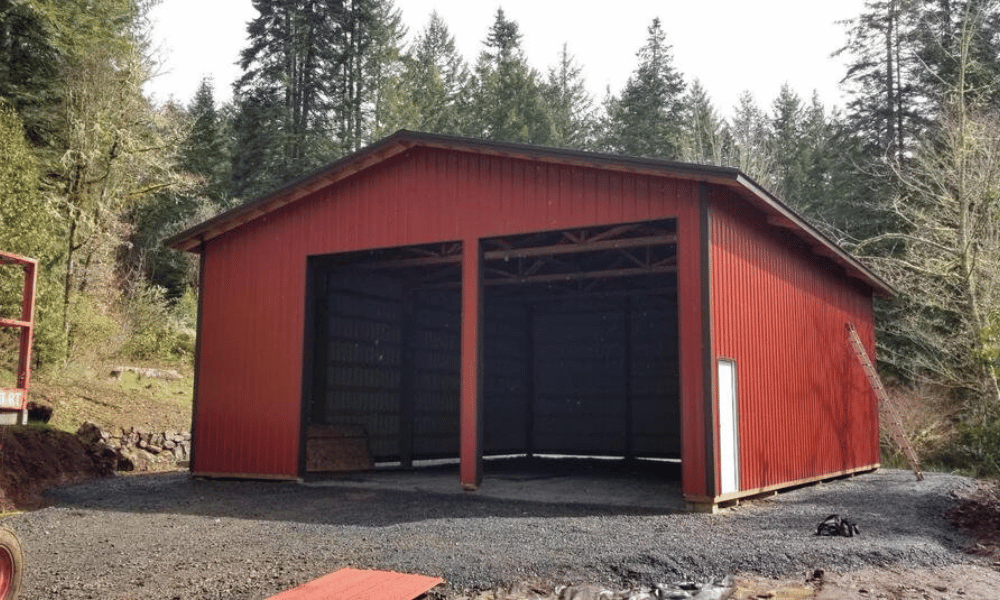Introduction
Designing a functional storage layout in your pole barn can be a game-changer, whether for agricultural purposes, workshops, or even as a personal retreat. A well-organized space not only enhances efficiency but also makes it easier to find what you need when you need it. So, how do we go about crafting an optimal storage layout? In this comprehensive guide, we'll explore practical strategies and innovative ideas to help you maximize the space in your pole barn.
Understanding the Basics of Pole Barn Design
What is a Pole Barn?
A pole barn is essentially a structure built using poles or posts that support the roof and walls. Unlike traditional buildings with a full foundation, pole barns are simpler and often less expensive to construct. They offer flexibility in design and layout, making them ideal for various uses, from storage to workshops.
Key Characteristics of Pole Barns
- Cost-Effective Construction: Lower material costs. Versatility: Suitable for farming, recreational use, or residential applications. Easy Customization: You can modify the internal layout without major structural changes.
Why Choose a Pole Barn for Storage?
Choosing a pole barn for storage comes with its own set of advantages:
Spaciousness: High ceilings allow for vertical storage. Durability: Built to withstand harsh weather conditions. Simplicity: Easier maintenance compared to more complex structures.How to Design a Functional Storage Layout in Your Pole Barn
Analyzing Your Space Requirements
Before diving into the design process, it's essential to analyze your specific needs.
Inventory Assessment:- What items will you store? How often will you access these items?
- Separate daily-use items from seasonal ones.
- Measure available space accurately.
Creating Zones Within Your Pole Barn
Establishing distinct zones can enhance organization significantly:
- Workshop Area Storage Zone for Equipment Seasonal Storage Personal Space (if applicable)
Choosing the Right Shelving and Storage Solutions
Shelving units come in various forms; choosing the right type is crucial:
Heavy-Duty Racks: Ideal for tools and machinery. Wall-Mounted Shelves: Great for maximizing vertical space. Bins and Baskets: Perfect for smaller items.Incorporating Vertical Space Effectively
With high ceilings typical of pole barns, utilizing vertical space is key:
- Use tall shelving units. Hang tools on pegboards at eye level. Install overhead storage solutions.
Optimizing Workflow in Your Storage Layout
The Importance of Workflow Design
A functional layout should facilitate movement within the space:
Pathways should be clear and wide enough. Place frequently used items near the entrance.Mapping Out Your Workflow Process
Create a simple flowchart outlining how you'll move through tasks within your pole barn:
| Task | Start Point | End Point https://trueen.com/business/listing/dean-lindsey-construction/516714 | |--------------------------|---------------------|---------------------| | Retrieve Tools | Entrance | Workbench | | Store Seasonal Items | Outside Entrance | Back Corner |
Lighting and Ventilation Options for Your Pole Barn
Importance of Proper Lighting
Good lighting enhances safety and productivity:
- Consider installing overhead LED lights. Use natural light from windows where possible.
Ensuring Proper Ventilation
Ventilation helps prevent moisture buildup:
- Add vents near the top of the walls. Install exhaust fans if necessary.
Safety Considerations When Designing Your Layout
Safety First! Create Clear Paths!
Maintaining clear pathways reduces accidents:
Mark areas that should remain open. Ensure emergency exits are easily accessible.Use Non-Slip Flooring Solutions
Opting for non-slip materials can minimize injury risks:
- Epoxy flooring Rubber mats
Personalizing Your Pole Barn Space
Incorporating Personal Touches
Adding personal elements makes your pole barn feel like home:
- Paint walls in colors that inspire you. Display tools as art pieces or memorabilia.
Creating Comfort Zones Within Your Layout
If you're using your pole barn as more than just storage:
Set up seating areas with comfortable furniture. Include elements like rugs or curtains for comfort.Maximizing Accessibility in Your Storage Layout
Consideration for All Users
Making your space user-friendly ensures everyone can access what they need easily:
- Label shelves clearly. Use transparent bins for visibility.
Technology Integration in Your Storage Setup
Smart Solutions for Modern Storage Needs
Embrace technology by integrating smart solutions into your layout:
Smart shelves that notify when stock is low. Apps that help track inventory levels easily.Sustainability Practices in Pole Barn Design
Eco-Friendly Materials For Construction & Design
Using sustainable materials not only benefits the environment but also adds longevity to your structure:
- Reclaimed wood Energy-efficient lighting options
Maintenance Tips For Long-lasting Functionality
Keeping your pole barn functional requires regular upkeep:
Inspect roofing annually. Clean gutters and drainage systems regularly.Frequently Asked Questions (FAQs)
What size should my pole barn be?
The size depends on your specific needs; however, consider future expansions as well!
How do I manage humidity inside my pole barn?
Ventilation is key! Using vents or exhaust fans will help regulate humidity levels effectively.

Can I customize my storage solutions?
Absolutely! The beauty of using a pole barn lies in its flexibility—tailor it all to fit your needs!
What flooring works best inside my pole barn?
Concrete is durable; however, rubber mats provide excellent traction if you're worried about slips!
How do I keep pests out of my pole barn?
Regular cleaning helps discourage pests; consider sealed containers as additional protection!
Is building a pole barn worth the investment?
Yes! Given its versatility and cost-effectiveness, investing in one often pays off over time!
Conclusion
Designing a functional storage layout in your pole barn doesn't have to be overwhelming—it’s all about understanding your needs and utilizing creative approaches! By assessing your inventory requirements, creating distinct zones, optimizing workflow paths, incorporating safety features, integrating technology, embracing sustainable practices, and ensuring proper maintenance—you’ll create an organized sanctuary tailored just for you!
So roll up those sleeves and get started today because an efficient space awaits you!